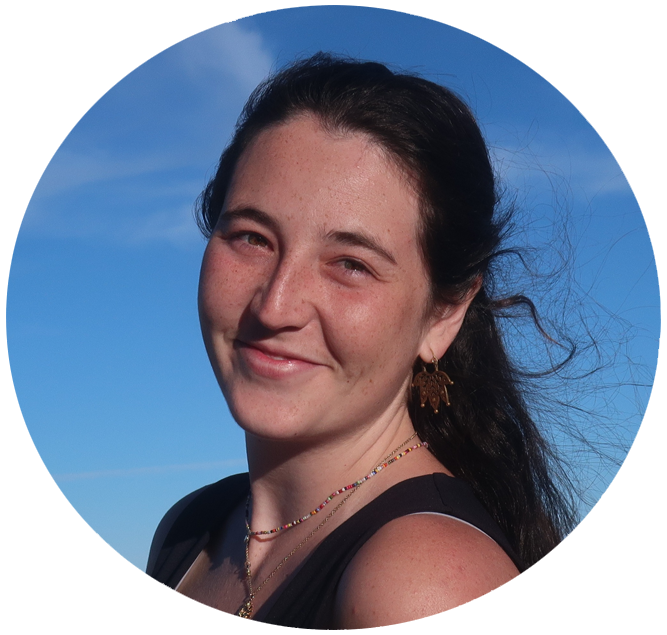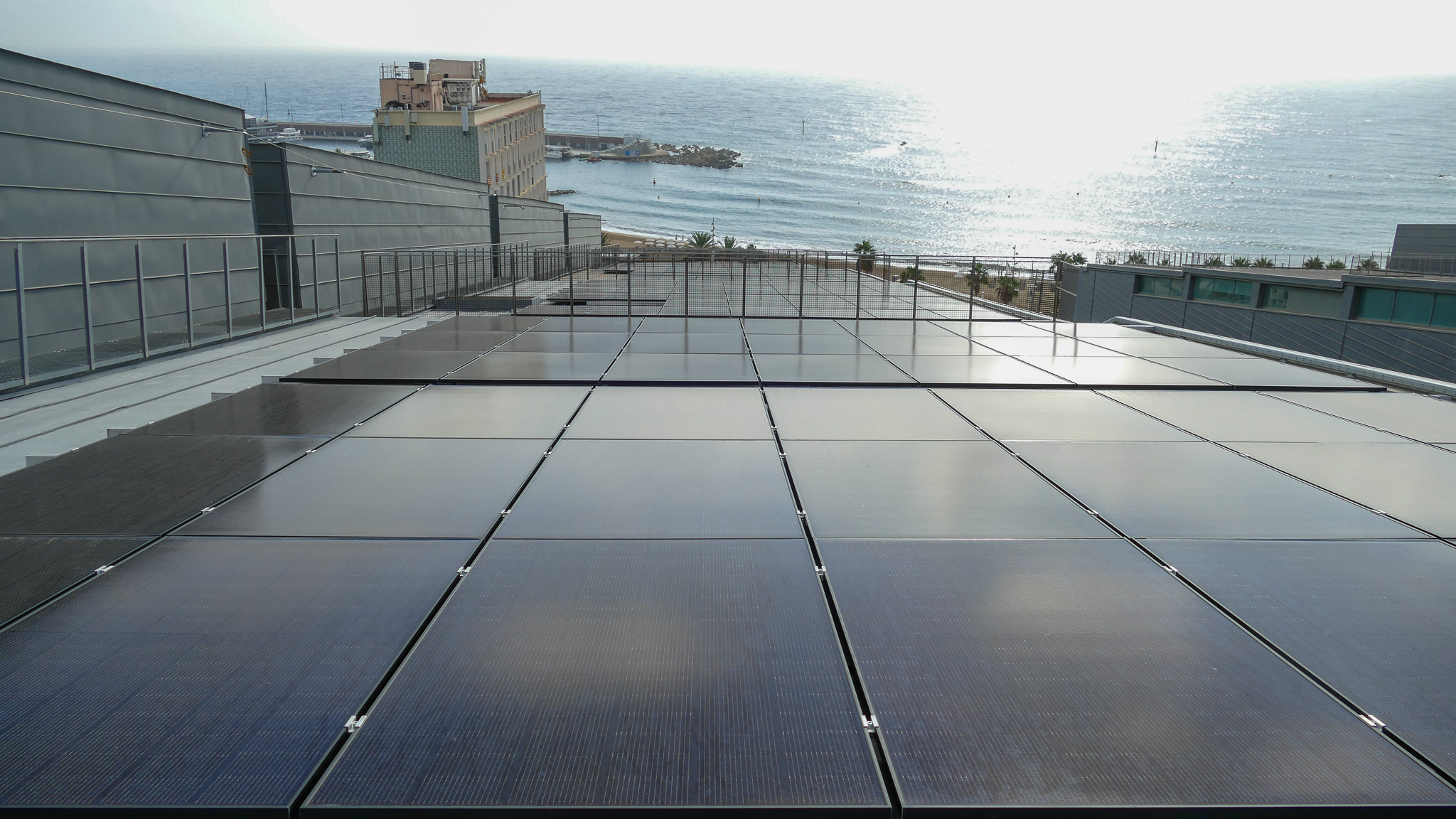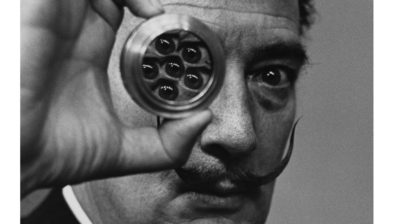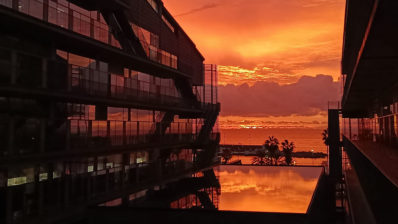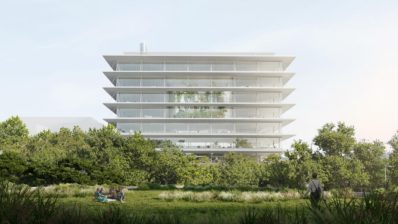The Infrastructure Department at the Barcelona Biomedical Research Park (PRBB) installed photovoltaic panels on the building this summer. We speak with Juan Carlos Inglés, in charge of the Park’s engineering and maintenance, to learn more about how this idea came about and how it aligns with the PRBB’s sustainability goals.
Juan Carlos, what’s on the roof right now?
We now have 174 solar panels, covering a total surface area of about 350 square meters, which is roughly one-third of the roof.
When developing the project, we had to consider the specific conditions of our location: we’re right by the sea, so there’s a lot of humidity. We also had to consider the fauna that lives around us, i.e. the seagulls! That’s why we chose panels that are more resistant and degrade much less due to salt exposure.
What efficiency and power output do they have?
These panels are about 30% more efficient than most on the market, which worked out perfectly since they were also the best fit for our project. The installed power capacity is 60 kW.
And what do you use this generated power for?
60 kW is a small part of the total energy we consume in the building. We use it to help with the cooling and air conditioning for the entire Park.
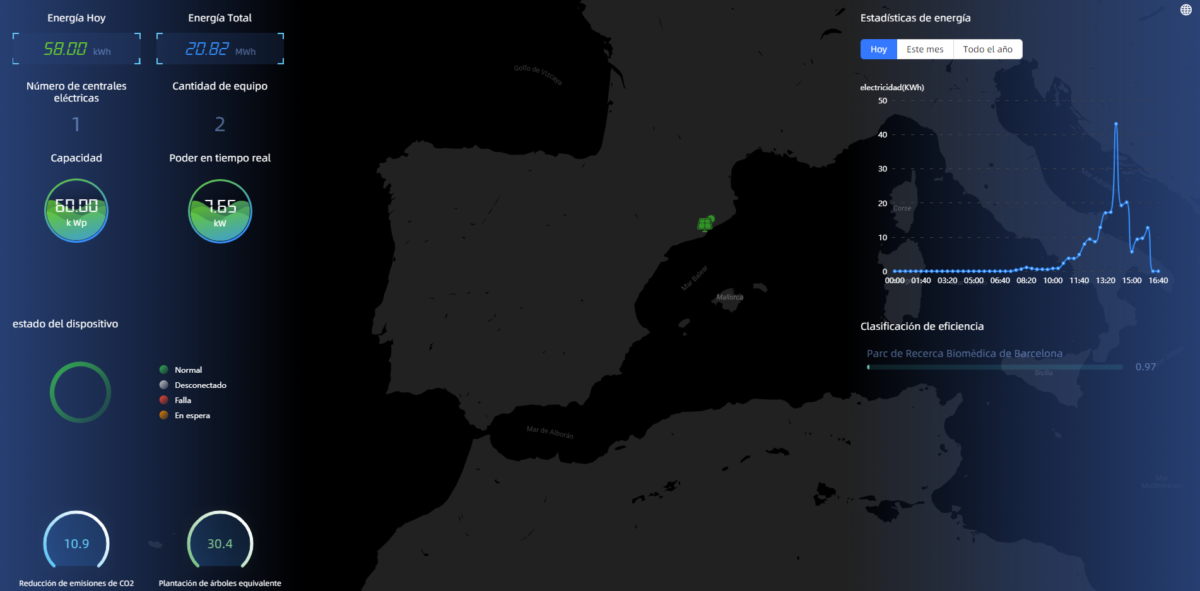
Have you already noticed any savings on the electricity bill?
The economic savings are quite small. The Park is a significant energy consumer; we consume megawatts—lots of them! The installed capacity of the panels is 60 kW. In the end, it’s a small contribution, but we’re generating it with solar energy, and every bit helps. So far, we’ve reduced CO₂ emissions by around 10.9 tons, which is equivalent to planting nearly 30 trees.
Why did the idea of installing panels come about?
Years ago, we had a solar installation to generate hot water, which is no longer in use. These original panels were installed when the building was first created. Over time, both needs and technology have evolved, and modern infrastructures offer more efficient and sustainable solutions that the PRBB is committed to.
It’s also in line with the goals and initiatives of sustainability groups within the building, including the official Sustainability Board and a grassroots sustainability group formed by residents of the Park.
How long did the installation take?
Four months. For the first month, we were defining and preparing the project: selecting the type of panels, handling the administrative processes, and securing the area to make it as safe as possible for the workers. Once that was ready, the installation went quite quickly. We had to remove the old panels and install the new ones over a much larger area. They were operational by mid-August.
“The PRBB’s strategic goal is energy efficiency and to be as sustainable as possible”
Will the long-term efficiency and lifespan of these panels be good?
The panels have a lifespan of 20 to 50 years with proper maintenance, of course. Over time, they gradually lose the ability to capture solar energy and convert it into electricity. We’re aware of this, but we’re confident that the panels will last us a long time.
How is maintenance managed?
These panels are now integrated into our GMAO, our Computerized Maintenance Management System. We plan preventive maintenance for the installations, and the program automatically issues tasks periodically, whether to clean the panels, check certain metrics, etc., all through work orders.
Are you considering other sustainability measures besides the solar panels?
Yes, among other things, like the recent renovation of the data server installations and processers, as part of the PRBB’s general strategy of sustainability we are currently updating the Park’s interior lighting. Since January, we’ve been replacing low-consumption fluorescent lights with new LED technology. If all goes well, we’ll finish by December. It’s a lot of lights, so we’re sure to notice the difference!
